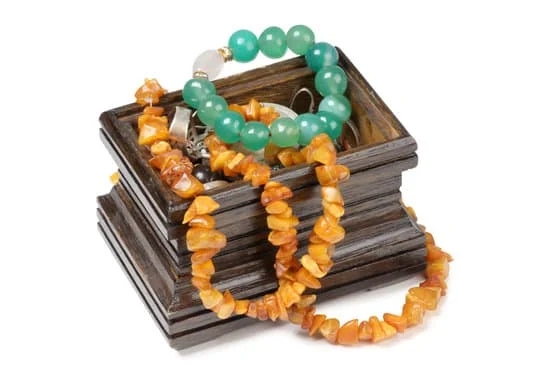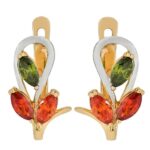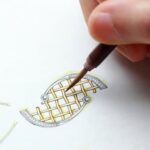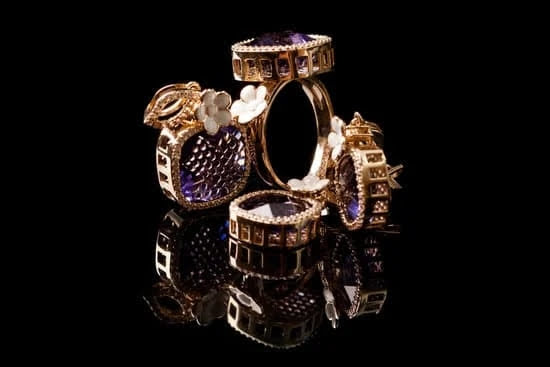Are you wondering how to price wholesale handmade jewelry? Setting the right wholesale prices is crucial for the success of a jewelry business. In this article, we will guide you through the essential steps and considerations for effectively pricing your handmade jewelry products for wholesale distribution.
Pricing wholesale handmade jewelry is a critical aspect of running a successful jewelry business. The right pricing strategy can impact profitability, competitiveness in the market, and overall business success. Understanding how to accurately calculate costs, determine competitive pricing, and establish wholesale terms and conditions are essential components of effective pricing strategies for wholesale handmade jewelry.
Throughout this article, we will explore the various factors that should be considered when determining wholesale prices for handmade jewelry. From understanding the cost of materials and labor to factoring in overhead expenses and conducting market research, we will provide valuable insights and actionable steps to help you set appropriate wholesale prices for your unique handmade jewelry products.
Understanding the Cost of Materials
When pricing wholesale handmade jewelry, it is crucial to have a thorough understanding of the cost of materials involved in creating each piece. Calculating the cost of materials accurately is essential for ensuring that your wholesale prices cover not only the labor and overhead costs but also allow for a reasonable profit margin. This section will provide guidance on how to calculate the cost of materials for handmade jewelry, helping you establish competitive and sustainable wholesale pricing.
Inventory Management and Tracking
Efficient inventory management is key to accurately calculating the cost of materials for your handmade jewelry. Implementing a system to track and manage your inventory can help you keep a record of the materials used in each piece, their respective costs, and the quantity utilized. By maintaining detailed records, you can ensure that all material expenses are accounted for when determining wholesale prices.
Cost Analysis and Material Breakdown
Conducting a thorough cost analysis and material breakdown is essential for determining the true cost of producing each piece of handmade jewelry. This involves breaking down the components used in each design, including beads, gemstones, metals, findings, and any other embellishments or supplies. It’s important to consider not only the initial purchase cost of these materials but also any additional expenses such as shipping fees or taxes.
Calculating Average Material Cost Per Piece
After identifying and analyzing all material expenses associated with creating your handmade jewelry designs, you can calculate the average material cost per piece. This involves dividing the total material expenses by the number of pieces produced to determine how much each item costs in terms of raw materials.
Understanding this figure is crucial for setting competitive wholesale prices that account for material costs while allowing for profitability. Through diligent inventory management, detailed analysis, and precise calculations, you can gain a comprehensive understanding of your material costs and set strategic wholesale prices for your handmade jewelry business.
Factoring in Labor Costs
When it comes to pricing wholesale handmade jewelry, factoring in labor costs is a crucial step in ensuring that the final pricing is both competitive and profitable. Calculating labor costs accurately is essential for maintaining a sustainable business while also providing fair compensation for the effort put into creating each piece of jewelry.
One of the key factors in determining labor costs for handmade jewelry production is establishing an hourly rate for the labor involved. This can be done by considering the time spent on each piece, including design, assembly, finishing, and packaging. It’s important to be realistic about the time required for these tasks and to account for any additional labor such as specialized techniques or customizations.
In addition to hourly rates, it’s also important to consider any additional labor-related expenses such as training, insurance, workspace rental, or utilities. By factoring in all these costs, you can ensure that your wholesale pricing not only covers the direct labor involved but also contributes to the overall sustainability of your jewelry business.
Finally, it’s worth noting that as your business grows and your production processes become more efficient, your labor costs may change. Regularly reviewing and adjusting your labor costs will help you maintain competitiveness in the market while also ensuring that your wholesale handmade jewelry business remains profitable.
| Calculation | Details |
|---|---|
| Hourly Rate | Determine reasonable compensation based on time spent on each piece |
| Additional Expenses | Consider training, insurance, workspace rental, utilities |
| Regular Review | Adjust labor costs as production processes become more efficient |
Overhead and Operational Costs
When pricing wholesale handmade jewelry, it’s essential to consider all the costs involved in creating and selling your products. In addition to the cost of materials and labor, there are various overhead and operational expenses that should be factored into your wholesale pricing strategy. These costs can significantly impact your profit margins and overall business success.
One important factor to consider is the cost of tools and equipment used in creating handmade jewelry. Whether it’s specialized tools for metalwork or a kiln for glass fusion, these items represent a significant investment that should be accounted for in your pricing. Additionally, if you operate from a dedicated workspace, such as a studio or workshop, you’ll need to include rent or mortgage payments, utilities, and any other related expenses in your calculations.
Another consideration is packaging and shipping costs. When selling wholesale, you may need to package multiple pieces of jewelry together or invest in branded packaging for your products. You’ll also need to factor in the cost of shipping materials and postage for sending orders to retailers. These additional expenses can quickly add up and should be reflected in your wholesale pricing.
Finally, don’t forget about marketing and advertising costs. While these may not be directly tied to the production of each piece of jewelry, promoting your brand and products is crucial for attracting wholesale clients. Whether you invest in promotional materials, attend trade shows, or run online advertising campaigns, these expenses should be considered when setting your wholesale prices.
| Expense | Example |
|---|---|
| Cost of tools and equipment | Metalwork tools, kiln for glass fusion |
| Packaging and shipping costs | Branded packaging, shipping materials, postage |
| Marketing and advertising costs | Promotional materials, trade show attendance, online advertising |
Researching Market Pricing
When it comes to pricing wholesale handmade jewelry, conducting thorough market research is essential in determining competitive pricing that ensures profitability and success in the jewelry business. Understanding the market and the pricing strategies of competitors can provide valuable insights into setting wholesale prices that are both attractive to retailers and sustainable for your business. Here’s a closer look at the importance of market research in determining competitive wholesale pricing for handmade jewelry.
Assessing Competitor Pricing
One of the first steps in researching market pricing for wholesale handmade jewelry is to assess the pricing strategies of competitors. This involves analyzing the prices at which similar handmade jewelry products are being offered by other businesses. By understanding the price points set by competitors, you can determine where your products fit within the market and whether adjustments need to be made to remain competitive while still ensuring profitability.
Identifying Trends and Demand
Market research also involves identifying trends and demand within the handmade jewelry industry. By understanding what styles, materials, or designs are currently popular, you can tailor your products to meet consumer demand and price them accordingly. This also allows you to identify niche markets or unique selling points that can justify higher price points for your wholesale jewelry.
Setting Wholesale Prices
Pricing handmade jewelry for wholesale can be a challenging task, but it is crucial in order to ensure the profitability and success of a jewelry business. In order to effectively price wholesale handmade jewelry, it’s important to consider the cost of materials, labor, overhead and operational costs, as well as market pricing. By carefully analyzing these factors, setting the right wholesale prices can lead to a sustainable and profitable business.
When determining how to price wholesale handmade jewelry, it is essential to first calculate the cost of materials. This includes not only the actual materials used in creating each piece of jewelry, but also any additional supplies and packaging costs. Once the material costs are determined, factoring in labor costs is the next step. It’s important to accurately calculate the time spent on creating each piece of jewelry and assign an appropriate monetary value to that labor.
After considering material and labor costs, it’s crucial to account for overhead and operational expenses such as rent, utilities, marketing, and other business-related expenses. Factoring in these additional costs will ensure that wholesale prices cover all aspects of running a jewelry business.
Lastly, researching market pricing is essential for setting competitive wholesale prices that are attractive to retailers while still allowing for profitability. By utilizing these actionable steps and guidelines, setting wholesale prices for handmade jewelry can be done strategically in order to ensure the overall success of a jewelry business.
Establishing Wholesale Terms and Conditions
When it comes to establishing wholesale terms and conditions for handmade jewelry, it is essential to create a clear and comprehensive framework that outlines key aspects such as minimum order quantities, payment terms, and return policies. Setting these terms will not only protect your business but also ensure a mutually beneficial relationship with retailers and distributors.
Minimum order quantities are an important factor to consider when setting wholesale terms. By determining the minimum quantity of products that must be ordered in one transaction, you can ensure that your production costs are covered and that each wholesale transaction is profitable. Additionally, setting minimum order quantities can help maintain consistent inventory levels for your handmade jewelry.
Another crucial aspect of establishing wholesale terms and conditions is defining payment terms. This includes determining the acceptable payment methods, setting credit terms if applicable, and outlining any late payment penalties. Clearly communicating your payment terms can help avoid misunderstandings and ensure a steady cash flow for your business.
In addition to minimum order quantities and payment terms, crafting clear return policies is essential for wholesale handmade jewelry. By outlining guidelines for returns, exchanges, and refunds, you can protect your business from potential losses while also providing reassurance to retailers and distributors. A well-defined return policy also reflects professionalism and transparency in your business operations.
As you can see understanding how to price wholesale handmade jewelry is essential when it comes to establishing solid wholesale terms and conditions like minimum order quantities, payment terms, and return policies. These factors will not only safeguard your business but also strengthen partnerships with retailers and distributors in the long run.
Marketing and Selling Wholesale Jewelry
When it comes to marketing and selling wholesale handmade jewelry, it’s essential to have a solid strategy in place. Here are some effective strategies for successfully marketing and selling your handmade jewelry to retailers and distributors:
- Build Relationships: One of the most important aspects of marketing and selling wholesale handmade jewelry is building strong relationships with retailers and distributors. Take the time to get to know potential buyers, understand their needs, and establish trust. Networking at trade shows and industry events can also be a great way to connect with potential buyers.
- Showcase Your Unique Selling Points: Highlight what sets your handmade jewelry apart from the competition. Whether it’s your use of high-quality materials, unique designs, or ethical production practices, make sure to communicate these unique selling points to potential buyers. Consider creating a compelling brand story that resonates with retailers and their customers.
- Create Professional Marketing Materials: Develop professional marketing materials such as lookbooks, line sheets, and samples that showcase your jewelry collection in the best light. These materials should effectively communicate the quality, design aesthetic, and marketability of your handmade jewelry.
In addition to these strategies, it’s important to have a clear understanding of the wholesale pricing for your handmade jewelry. By pricing your products strategically, you can ensure profitability while remaining competitive in the market. Understanding how to price wholesale handmade jewelry is crucial for success in the wholesale business.
Overall, effective marketing and selling of wholesale handmade jewelry require a combination of strategic pricing, relationship building, showcasing unique selling points, and professional marketing materials. By implementing these strategies, you can increase the visibility of your brand and successfully sell your handmade jewelry to retailers and distributors.
As you dive into marketing and selling wholesale handmade jewelry, always keep in mind the importance of understanding your target market’s needs and preferences. With a solid strategy in place and a clear understanding of pricing dynamics, you can position yourself for success in the competitive world of wholesale jewelry sales.
Conclusion
In conclusion, pricing wholesale handmade jewelry is a critical aspect of running a successful jewelry business. It requires careful consideration of the cost of materials, labor, overhead expenses, and market research to ensure profitability. By understanding how to calculate these costs and set competitive wholesale prices, jewelry artisans can effectively position their products in the market and attract retailers and distributors.
One of the key takeaways from this discussion is the importance of strategic pricing for the success of wholesale handmade jewelry businesses. Setting wholesale prices that not only cover production costs but also allow for a reasonable profit margin is essential for long-term sustainability. Additionally, establishing clear terms and conditions for wholesale transactions, as well as implementing effective marketing strategies, are crucial in attracting potential buyers and maximizing sales.
Ultimately, pricing wholesale handmade jewelry requires a delicate balance between covering costs and remaining competitive in the market. By following the guidelines outlined in this article on how to price wholesale handmade jewelry, jewelry artisans can position themselves for success in the industry while providing retailers and distributors with high-quality products that meet consumer demand.
Frequently Asked Questions
What Is the Wholesale Markup on Jewelry?
The wholesale markup on jewelry can vary depending on the type of jewelry and the retailer’s pricing strategy. In general, the markup can range from 25% to 100%, with higher-end or custom jewelry often commanding a higher markup.
What Percentage Do You Charge for Wholesale?
The percentage charged for wholesale jewelry typically depends on several factors such as the cost of production, market demand, and competition. Wholesale percentages can range from 20% to 50% or even higher depending on these variables and negotiations between the supplier and retailer.
What Is the Average Profit Margin for Jewelry?
The average profit margin for jewelry is around 42-47%. This includes various costs such as materials, labor, overhead, and any other expenses related to producing and selling jewelry. However, profit margins can vary widely based on the type of jewelry and the business’s efficiency.

Welcome to my jewelry blog! My name is Sarah and I am the owner of this blog.
I love making jewelry and sharing my creations with others.
So whether you’re someone who loves wearing jewelry yourself or simply enjoys learning about it, be sure to check out my blog for insightful posts on everything related to this exciting topic!





